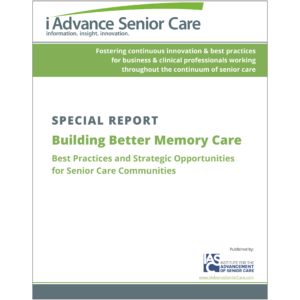‘Excuse me, DON, but you looked mad!’
In a few minutes I am again out of the office standing behind the nurses’ desk when one of my CNA’s asks, “What is wrong?”
“Nothing,” I reply. “Why?”
She then says something I will never forget. “We saw you walk across the lobby a few minutes ago and you looked mad!”
At that moment, I was reminded how closely our staff and residents watch us. Sometimes our looks of concentration are taken as looks of frustration or anger. We, in long-term care administration, have a responsibility to keep our body language in check. In a job where we are expected to think on our feet, care on the run, and counsel on the fly, we are always being watched.
Body language, the most vital part of communication, is often the most ignored. When stress levels are multiplied threefold by changes, regulations, and MDS 3.0—to mention only a few of our worries—we must remember that our frontline staff is feeling the crunch as well. We expect staff members to smile, even when they want to cry; even when they are being cursed at. But I, too, must also remember to smile.
Our gestures, movements, or mannerisms by which we communicate with others have a great effect on the atmosphere of our facilities. I invite you to look around, observe the faces of your staff members, and then peer into a mirror.
Does your facility look like a great place to work?
Author Frieda Stewart, RN, is the Director of Nursing at Corn Heritage Village in Corn, Oklahoma; the owner and CEO of VitalAttitudes, LLC; and a public speaker who travels all across the United States.
I Advance Senior Care is the industry-leading source for practical, in-depth, business-building, and resident care information for owners, executives, administrators, and directors of nursing at assisted living communities, skilled nursing facilities, post-acute facilities, and continuing care retirement communities. The I Advance Senior Care editorial team and industry experts provide market analysis, strategic direction, policy commentary, clinical best-practices, business management, and technology breakthroughs.
I Advance Senior Care is part of the Institute for the Advancement of Senior Care and published by Plain-English Health Care.
Related Articles
Topics: Facility management , Staffing











